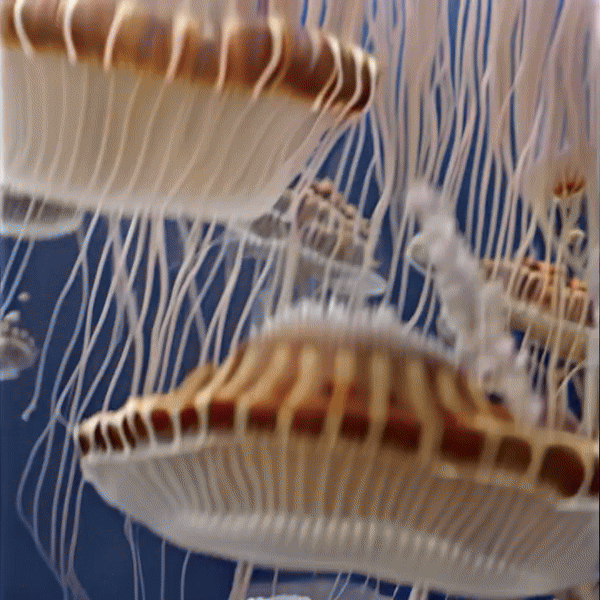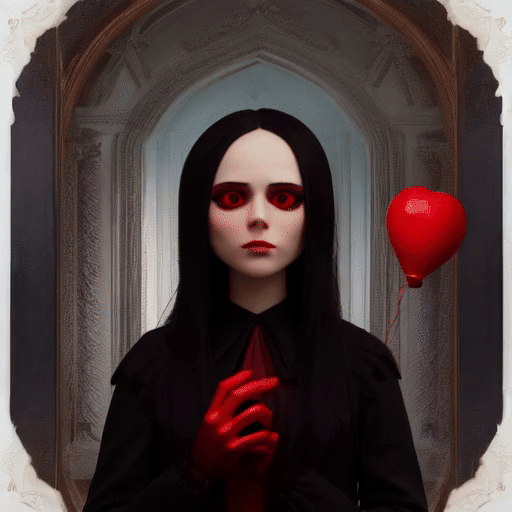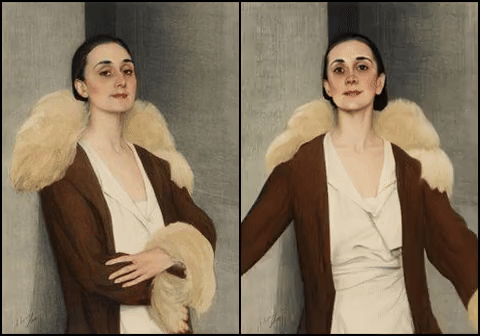streaming-t2v
Maintainer: camenduru

3

| Property | Value |
|---|---|
| Run this model | Run on Replicate |
| API spec | View on Replicate |
| Github link | View on Github |
| Paper link | View on Arxiv |
Create account to get full access
Model overview
The streaming-t2v model, developed by creator camenduru, is a novel AI model designed to generate consistent, dynamic, and extendable long videos from text prompts. This model builds upon similar approaches like champ, lgm, aniportrait-vid2vid, and animate-lcm, as well as the widely-used stable-diffusion model.
Model inputs and outputs
The streaming-t2v model takes a text prompt as input and generates a sequence of video frames as output. The model is designed to produce long, consistent videos that can be dynamically extended, making it suitable for a variety of applications.
Inputs
- Prompt: A text description of the desired video content.
- Seed: A numerical seed value used to initialize the random number generator for reproducibility.
- Chunk: The number of video frames to generate at a time.
- Num Steps: The number of diffusion steps to use in the video generation process.
- Num Frames: The total number of video frames to generate.
- Image Guidance: A parameter that controls the influence of an image on the video generation process.
- Negative Prompt: A text description of undesired elements to exclude from the generated video.
- Enhance: A boolean flag to enable additional enhancement of the generated video.
- Overlap: The number of overlapping frames between consecutive video chunks.
Outputs
- The generated video frames, represented as a sequence of image URIs.
Capabilities
The streaming-t2v model excels at generating long, coherent videos that maintain consistent visual quality and style throughout the duration. By leveraging techniques like chunking and overlapping, the model can dynamically extend video sequences indefinitely, making it a powerful tool for a wide range of applications.
What can I use it for?
The streaming-t2v model can be used for various creative and commercial applications, such as generating animated short films, visual effects, product demonstrations, and educational content. Its ability to produce long, consistent videos from text prompts makes it a versatile tool for content creators, marketers, and educators alike.
Things to try
Experiment with different text prompts to see the range of video content the streaming-t2v model can generate. Try prompts that describe dynamic scenes, such as "a herd of elephants roaming through the savanna", or abstract concepts, like "the flow of time". Observe how the model maintains coherence and consistency as the video sequence progresses.
This summary was produced with help from an AI and may contain inaccuracies - check out the links to read the original source documents!
Related Models

one-shot-talking-face

1
one-shot-talking-face is an AI model that enables the creation of realistic talking face animations from a single input image. It was developed by Camenduru, an AI model creator. This model is similar to other talking face animation models like AniPortrait: Audio-Driven Synthesis of Photorealistic Portrait Animation, Make any Image Talk, and AnimateLCM Cartoon3D Model. These models aim to bring static images to life by animating the subject's face in response to audio input. Model inputs and outputs one-shot-talking-face takes two input files: a WAV audio file and an image file. The model then generates an output video file that animates the face in the input image to match the audio. Inputs Wav File**: The audio file that will drive the facial animation. Image File**: The input image containing the face to be animated. Outputs Output**: A video file that shows the face in the input image animated to match the audio. Capabilities one-shot-talking-face can create highly realistic and expressive talking face animations from a single input image. The model is able to capture subtle facial movements and expressions, resulting in animations that appear natural and lifelike. What can I use it for? one-shot-talking-face can be a powerful tool for a variety of applications, such as creating engaging video content, developing virtual assistants or digital avatars, or even enhancing existing videos by animating static images. The model's ability to generate realistic talking face animations from a single image makes it a versatile and accessible tool for creators and developers. Things to try One interesting aspect of one-shot-talking-face is its potential to bring historical or artistic figures to life. By providing a portrait image and appropriate audio, the model can animate the subject's face, allowing users to hear the figure speak in a lifelike manner. This could be a captivating way to bring the past into the present or to explore the expressive qualities of iconic artworks.
Updated Invalid Date

dynami-crafter-576x1024

14
The dynami-crafter-576x1024 model, developed by camenduru, is a powerful AI tool that can create videos from a single input image. This model is part of a collection of similar models created by camenduru, including champ, animate-lcm, ml-mgie, tripo-sr, and instantmesh, all of which focus on image-to-video and 3D reconstruction tasks. Model inputs and outputs The dynami-crafter-576x1024 model takes an input image and generates a video output. The model allows users to customize various parameters, such as the ETA, random seed, sampling steps, motion magnitude, and CFG scale, to fine-tune the video output. Inputs i2v_input_image**: The input image to be used for generating the video i2v_input_text**: The input text to be used for generating the video i2v_seed**: The random seed to be used for generating the video i2v_steps**: The number of sampling steps to be used for generating the video i2v_motion**: The motion magnitude to be used for generating the video i2v_cfg_scale**: The CFG scale to be used for generating the video i2v_eta**: The ETA to be used for generating the video Outputs Output**: The generated video output Capabilities The dynami-crafter-576x1024 model can be used to create dynamic and visually appealing videos from a single input image. It can generate videos with a range of motion and visual styles, allowing users to explore different creative possibilities. The model's customizable parameters provide users with the flexibility to fine-tune the output according to their specific needs. What can I use it for? The dynami-crafter-576x1024 model can be used in a variety of applications, such as video content creation, social media marketing, and visual storytelling. Artists and creators can use this model to generate unique and eye-catching videos to showcase their work or promote their brand. Businesses can leverage the model to create engaging and dynamic video content for their marketing campaigns. Things to try Experiment with different input images and text prompts to see the diverse range of video outputs the dynami-crafter-576x1024 model can generate. Try varying the model's parameters, such as the random seed, sampling steps, and motion magnitude, to explore how these changes impact the final video. Additionally, compare the outputs of this model with those of other similar models created by camenduru to discover the nuances and unique capabilities of each.
Updated Invalid Date

animate-lcm

1
The animate-lcm model, developed by camenduru, is a cartoon-style 3D animation model. It is capable of generating cartoon-like 3D animations from text prompts. The model draws inspiration from similar 3D animation models like LGM, Champ, and AnimateDiff-Lightning, which also aim to create 3D animated content from text. Model inputs and outputs The animate-lcm model takes in a text prompt as input and generates a 3D animation as output. The input prompt can describe the desired scene, character, and animation style, and the model will attempt to create a corresponding 3D animation. Inputs Prompt**: A text description of the desired scene, character, and animation style. Width**: The width of the output image in pixels. Height**: The height of the output image in pixels. Video Length**: The length of the output animation in number of frames. Guidance Scale**: A parameter controlling the strength of the text prompt in guiding the animation generation. Negative Prompt**: A text description of elements to exclude from the output. Num Inference Steps**: The number of steps to use when generating the animation. Outputs Output**: A 3D animated video file generated based on the input prompt. Capabilities The animate-lcm model is capable of generating cartoon-style 3D animations from text prompts. It can create a wide variety of animated scenes and characters, from cute animals to fantastical creatures. The animations have a distinctive hand-drawn, sketchy aesthetic. What can I use it for? The animate-lcm model can be used to quickly generate 3D animated content for a variety of applications, such as short films, social media posts, or video game assets. Its ability to generate animations from text prompts makes it a powerful tool for content creators, animators, and designers who want to quickly explore and iterate on different animation ideas. Things to try One interesting aspect of the animate-lcm model is its ability to capture the essence of a prompt in a unique, stylized way. For example, you could try generating animations of the same prompt with different variations, such as changing the guidance scale or negative prompt, to see how the model interprets the prompt differently. You could also experiment with prompts that combine multiple elements, like "a cute rabbit playing in a field of flowers," to see how the model combines these elements into a cohesive animation.
Updated Invalid Date

champ

13
champ is a model developed by Fudan University that enables controllable and consistent human image animation with 3D parametric guidance. It allows users to animate human images by specifying 3D motion parameters, resulting in realistic and coherent animations. This model can be particularly useful for applications such as video game character animation, virtual avatar creation, and visual effects in films and videos. In contrast to similar models like InstantMesh, Arc2Face, and Real-ESRGAN, champ focuses specifically on human image animation with detailed 3D control. Model inputs and outputs champ takes two main inputs: a reference image and 3D motion guidance data. The reference image is used as the basis for the animated character, while the 3D motion guidance data specifies the desired movement and animation. The model then generates an output image that depicts the animated human figure based on the provided inputs. Inputs Ref Image Path**: The path to the reference image used as the basis for the animated character. Guidance Data**: The 3D motion data that specifies the desired movement and animation of the character. Outputs Output**: The generated image depicting the animated human figure based on the provided inputs. Capabilities champ can generate realistic and coherent human image animations by leveraging 3D parametric guidance. The model is capable of producing animations that are both controllable and consistent, allowing users to fine-tune the movement and expression of the animated character. This can be particularly useful for applications that require precise control over character animation, such as video games, virtual reality experiences, and visual effects. What can I use it for? The champ model can be used for a variety of applications that involve human image animation, such as: Video game character animation: Developers can use champ to create realistic and expressive character animations for their games. Virtual avatar creation: Businesses and individuals can use champ to generate animated avatars for use in virtual meetings, social media, and other online interactions. Visual effects in films and videos: Filmmakers and video content creators can leverage champ to enhance the realism and expressiveness of human characters in their productions. Things to try With champ, users can experiment with different 3D motion guidance data to create a wide range of human animations, from subtle gestures to complex dance routines. Additionally, users can explore the model's ability to maintain consistency in the animated character's appearance and movements, which can be particularly useful for creating seamless and natural-looking animations.
Updated Invalid Date